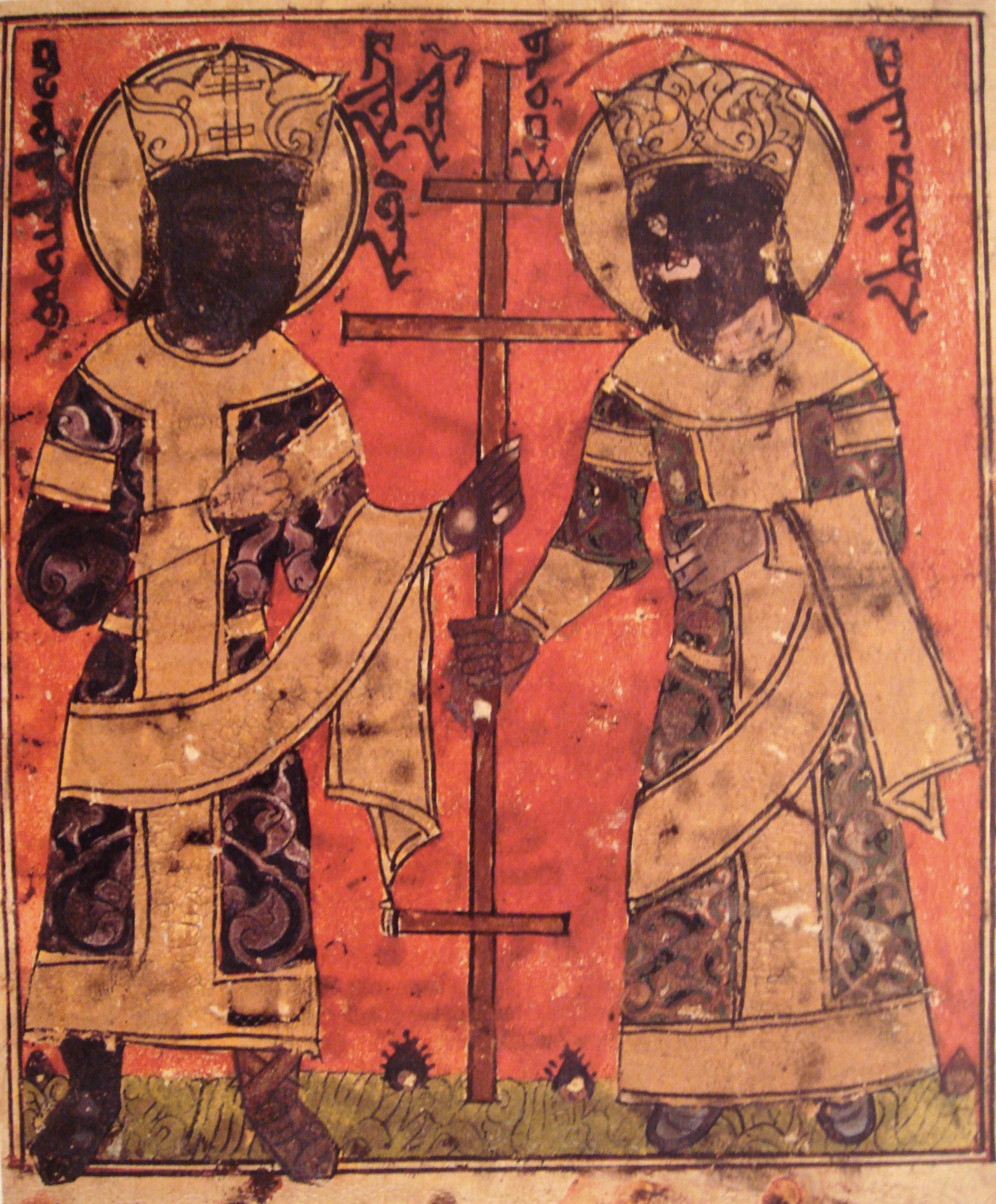Doquz Khatun on:
[Wikipedia]
[Google]
[Amazon]
Doquz Khatun (also spelled Dokuz Khatun) (d. 1265) was a 13th-century princess of the

Keraites
The Keraites (also ''Kerait, Kereit, Khereid''; ; ) were one of the five dominant Mongol or Turkic tribal confederations (khanates) in the Altai-Sayan region during the 12th century. They had converted to the Church of the East (Nestorianism) i ...
who was married to Hulagu Khan
Hulagu Khan, also known as Hülegü or Hulegu ( mn, Хүлэгү/ , lit=Surplus, translit=Hu’legu’/Qülegü; chg, ; Arabic: fa, هولاکو خان, ''Holâku Khân;'' ; 8 February 1265), was a Mongol ruler who conquered much of West ...
, founder of the Ilkhanate
The Ilkhanate, also spelled Il-khanate ( fa, ایل خانان, ''Ilxānān''), known to the Mongols as ''Hülegü Ulus'' (, ''Qulug-un Ulus''), was a khanate established from the southwestern sector of the Mongol Empire. The Ilkhanid realm, ...
.
Life
Doquz Khatun was a granddaughter of the Keraite khanToghrul
Toghrul ( mn, Тоорил хан ''Tooril han''; ), also known as Wang Khan or Ong Khan ( ''Wan han''; ; died 1203) was a khan of the Keraites. He was the blood brother (anda) of the Mongol chief Yesugei and served as an important early patron ...
, through his son Uyku or Abaqu. She was given to Tolui
Tolui (also Toluy, Tului; , meaning: "the mirror"; – 1232) was a Mongol khan, the fourth son of Genghis Khan by his chief khatun, Börte. At his father's death in 1227, his ''Orda (organization), ulus'', or territorial inheritance, was the ...
at first following the demise of her grandfather. After his death in 1232, she was wed to Hulagu
Hulagu Khan, also known as Hülegü or Hulegu ( mn, Хүлэгү/ , lit=Surplus, translit=Hu’legu’/Qülegü; chg, ; Arabic: fa, هولاکو خان, ''Holâku Khân;'' ; 8 February 1265), was a Mongol ruler who conquered much of West ...
, his step-son in levirate marriage
Levirate marriage is a type of marriage in which the brother of a deceased man is obliged to marry his brother's widow. Levirate marriage has been practiced by societies with a strong clan structure in which exogamous marriage (i.e. marriage out ...
. She was known to accompany Hulagu on campaigns. At the Siege of Baghdad (1258)
The siege of Baghdad was a siege that took place in Baghdad in 1258, lasting for 13 days from January 29, 1258 until February 10, 1258. The siege, laid by Ilkhanate Mongol forces and allied troops, involved the investment, capture, and sack of ...
, the Mongols
The Mongols ( mn, Монголчууд, , , ; ; russian: Монголы) are an East Asian ethnic group native to Mongolia, Inner Mongolia in China and the Buryatia Republic of the Russian Federation. The Mongols are the principal membe ...
massacred tens of thousands of inhabitants, but through the influence of Doquz, the Christians were spared.
Doquz Khatun was a Christian in the Church of the East
The Church of the East ( syc, ܥܕܬܐ ܕܡܕܢܚܐ, ''ʿĒḏtā d-Maḏenḥā'') or the East Syriac Church, also called the Church of Seleucia-Ctesiphon, the Persian Church, the Assyrian Church, the Babylonian Church or the Nestorian C ...
, and is often mentioned as a great benefactor of the Christian faith. When Mongol envoys were sent to Europe, they also tried to use Doquz's Christianity to their advantage, by claiming that Mongol princesses such as Doquz and her aunt Sorghaghtani Beki
Sorghaghtani Beki ( mn, Сорхагтани Бэхи/ ; ) or Bekhi ('' Bek(h)i'' is a title), also written Sorkaktani, Sorkhokhtani, Sorkhogtani, Siyurkuktiti ( – 1252), posthumous name Empress Xianyi Zhuangsheng (), was a Keraite princess and ...
were daughters of the legendary Prester John
Prester John ( la, Presbyter Ioannes) was a legendary Christian patriarch, presbyter, and king. Stories popular in Europe in the 12th to the 17th centuries told of a Nestorian patriarch and king who was said to rule over a Christian nation lost a ...
.
Doquz Khatun was a supporter of her step-son Abaqa
Abaqa Khan (27 February 1234 – 4 April 1282, mn, Абаха/Абага хан (Khalkha Cyrillic), ( Traditional script), "paternal uncle", also transliterated Abaġa), was the second Mongol ruler (''Ilkhan'') of the Ilkhanate. The son of Hulag ...
and retained her influential position even after the death of her husband. She secured succession of Denha I
Mar Denha I (also written Dinkha I) was Patriarch of the Church of the East (sometimes referred to as the Nestorian church) from 1265 to 1281. He was widely suspected of murdering Shem'on Bar Qaligh, bishop of Tus, and was remembered by later ...
to patriarchal throne of Church of the East in her capacity. She died on 16 June 1265, 4 months after her husband. Stepanos Orbelian
Stepanos Orbelian ( hy, Ստեփանոս Օրբելեան, originally spelled hy, Ստեփաննոս, translit=Stepʻannos, label=none; – 1303) was a thirteenth-century Armenians, Armenian historian and the metropolitan bishop of the provi ...
later claimed that she was poisoned by Shams al-Din Juvayni
Shams al-Din Juvayni ( fa, شمسالدین جوینی; also spelled Joveyni) was a Persian statesman and member of the Juvayni family. He was an influential figure in early Ilkhanate politics, serving as ''sahib-i divan'' (vizier and minist ...
.
See also
*Christianity among the Mongols
In modern times the Mongols are primarily Tibetan Buddhism, Tibetan Buddhists, but in previous eras, especially during the time of the Mongol empire (13th–14th centuries), they were primarily shamanist, and had a substantial minority of Chri ...
References
Works cited
* * 13th-century Mongolian women Nestorians Women of the Mongol Empire Mongol Empire Christians 1265 deaths Year of birth unknown Women in 13th-century warfare Women in war in the Middle East Women in war in East Asia Kerait people {{Asia-royal-stub